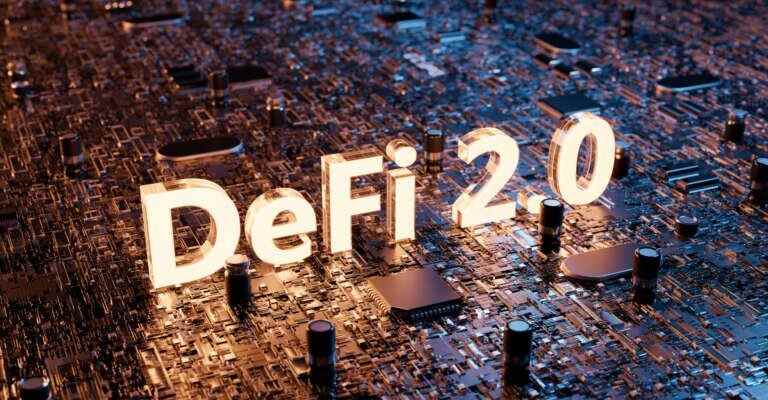Decentralized Finance (DeFi) 2.0 are second-generation DeFi protocols that aim to fix the problems inherent in DeFi 1.0 and maintain long-term viability in the industry.
What is DeFi (Decentralized Finance)?
Derived from the combination of the words Decentralized Finance, DeFi means Decentralized Finance. DeFi is a type of blockchain-based service that enables many transactions in traditional finance to take place in a decentralized way through smart contracts.
Uniswap, Aave, Bancor, MakerDAO, Compound and other early DeFi pioneers have made significant contributions to the ecosystem by laying a solid foundation.
The Latest Trend of the Cryptocurrency World: What is DeFi?
Related article: The Latest Trend of the Cryptocurrency World: What is DeFi?
What is DeFi 2.0?
DeFi 2.0 is the second generation of DeFi protocols that aims to fix the problems inherent in DeFi 1.0, the purpose of the protocols is to maintain the long-term viability of the industry. The goal of the pioneers of the DeFi 2.0 movement is to develop long-term liquidity methods. OlympusDAO, a protocol aimed at creating a decentralized reserve currency, is one of these pioneers. OlympusDAO has created Olympus Pro, which allows other DeFi protocols to use the tethering mechanism to gain their liquidity, demonstrating DeFi 2.0’s B2B (Business to Business) focus. With the launch of new DeFi products, it will produce valuable tools that will enable DAOs to compete with companies and strengthen the B2B focus of the movement.
DeFI 2.0 Innovations
DeFi 2.0 research began when users and projects understood the limitations of DeFi, which prompted them to find suitable solutions.
Interaction with the Ethereum network has become a problem for many DeFi users due to high gas costs and long waiting times. At this point, DeFi creates a solution for users to try DeFi without dealing with the scalability issues of the Ethereum network.
The simplest solution to attract investment in DeFi projects is to enable users to generate returns. Third-party liquidity providers in AMM protocols have provided a partial solution to the liquidity problem, allowing any independent person with sufficient funds to provide liquidity. Thanks to Yield Farming, costs have been reduced and a way has been found for users to earn more returns.
DeFi has another meaning for users besides generating returns, decentralization hence independence. However, many DeFi projects are managed by large companies. To address this issue, DeFi projects tend to prioritize the decentralization aspect. The DAO has been of great help in this problem, allowing all users to vote on the evolution of the project.
DeFi 2.0 Projects
OlympusDAO ($OHM) – Decentralized reserve currency model with bonds, LP, stakes and more.
Curve Finance (CRV) and Convex (CVX) – The Yield farming platform Convex is built on, which includes DAO, trading platform, LP, stablecoin and more.
Synapse ($SYN) – Trustless cross-chain bridge and automated market maker (AMM).
Wonderland ($TIME) – Avalanche-based reserve currency protocol.
Avalanche ($AVAX) : A fast, low-cost programmable smart contract platform on which DeFi 2.0 dApps can be built.
Left (LEFT) : It is a fast, secure and scalable blockchain.
Yearn Finance (YFI) : It is a return, credit aggregator and insurance provider platform on the Ethereum blockchain.
Rarible (RARI) : It is a DAO management and yield generation platform based on NFT sales.
